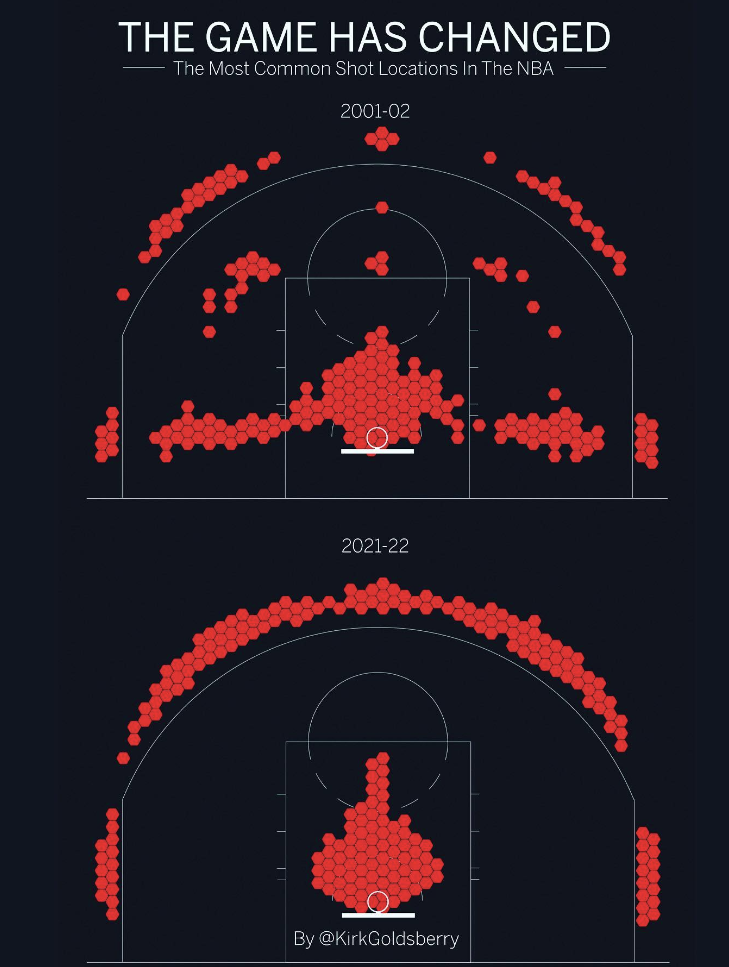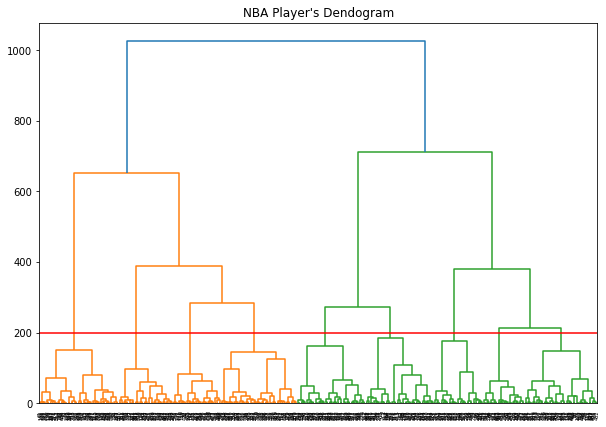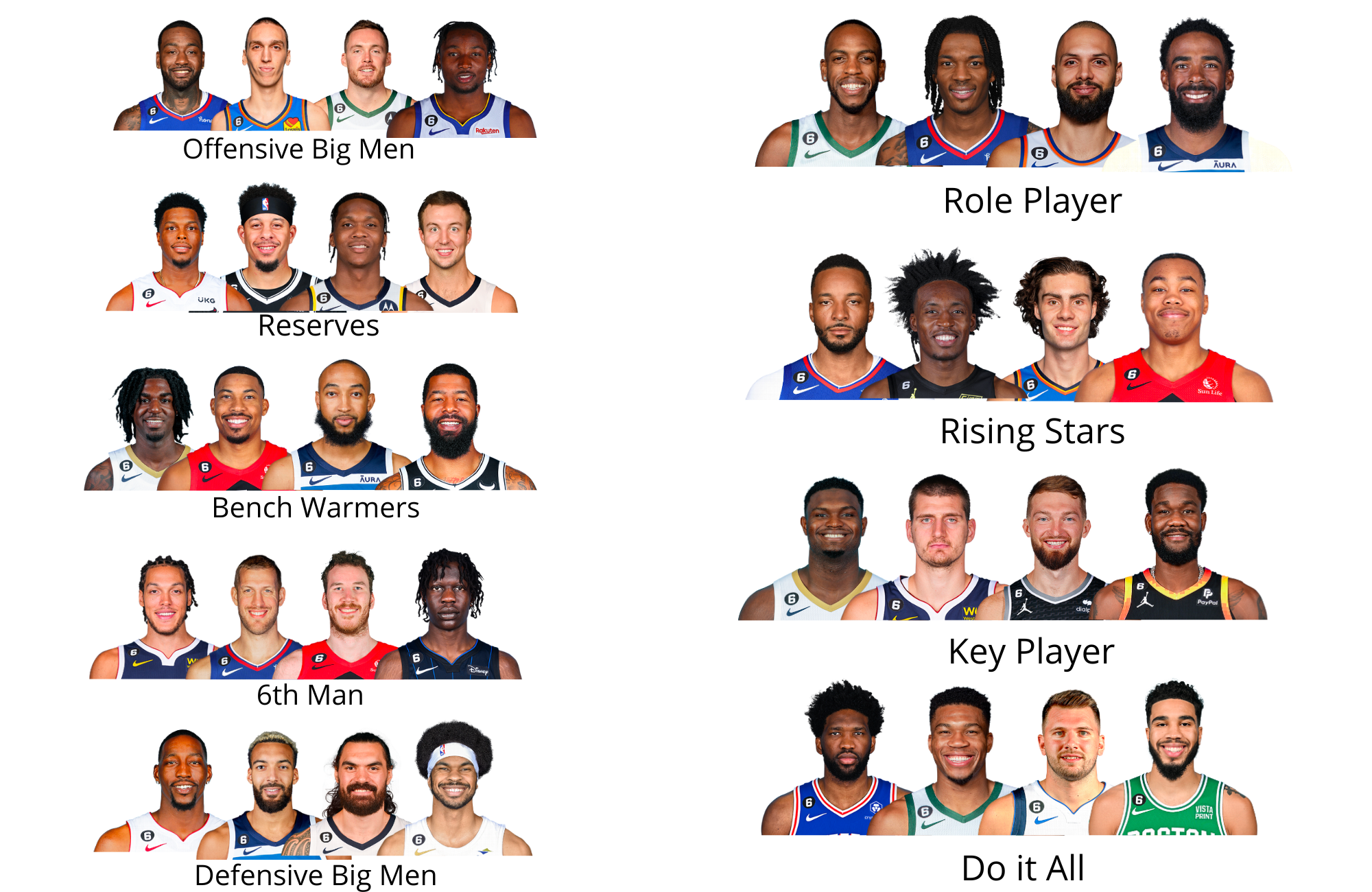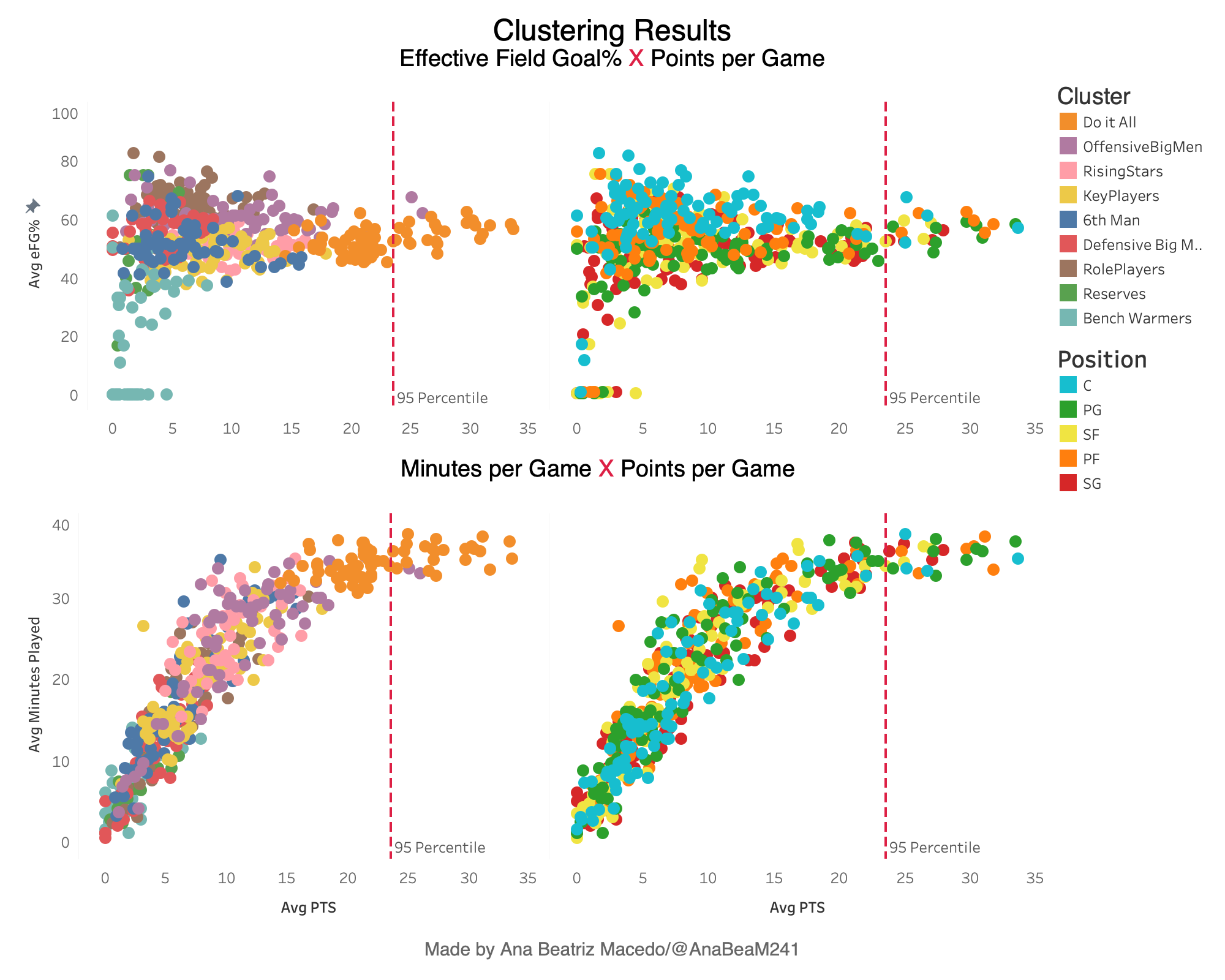
When people start comparing NBA players from today to old-school NBA players, they usually mention that they would not survive in today's league, or that the average present player would easily dominate the court back in the day. One thing is certain, it’s difficult to compare players from different eras when the NBA changes decade after decade.
To illustrate the evolution of plays, here is an example of the evolution of frequent shooting locations in the league (Credits: Kirk Golsberry).

We are able to see that long-range shooting has become the player's favorite and most valuable type of shooting. Big men like Power Forwards and Centers are becoming highly skilled shooters rather than just having the role of defensors and dominating under the basket. Now, we are going to redefine basketball's positions, because nowadays everyone has to do a little bit of everything in order to survive in this basketball era.
In order to understand better the player's roles, we decided to use non-supervised Machine Learning models to cluster (Group) the players. The data used was Per Games statistics of the current 2022-23 NBA Season like points per game, assists per game, rebounds per game, etc.
First of all, we decided to implement the K-Means model (A non-supervised statistical algorithm). And to find the ideal number of clusters the Silhouette score method was used.

With these two charts, we are able to see that we have a higher "information gain" when we move from having 8 to 9 groups of players. On the right, we used TSNE (A dimensionality reduction algorithm) to visualize how our groups are dispersed in two dimensions.
Nevertheless, we decided to also implement the model Hierarchical Clustering to provide another type of player division. When using this algorithm to find the optimal number of clusters, we just have to check where is the highest horizontal line and draw a line.

This horizontal line is crossed 9 times. This means that even in a different non-supervised model, having 9 clusters is the best option to divide our set of players. The evaluation score ranges from -1 to 1 with 1 meaning that the data is very compact within the cluster to which it belongs and far away from the other clusters. The best score was 0.45 with 9 clusters.
Now, let us move on to understand each group better and identify their possible roles on the court. Here is an example of which players were in which cluster. What do they have in common?

- The "6th Man" cluster is composed of players with more playmaking and mid-range shot attempts. They usually have fewer minutes on the court than starters, but more minutes than an average reserve player.
- The "Reserves" and "Bench Warmers" were two really similar clusters. The first one has more time on the court and a slight point-per-game advantage. The second has basically no time on the court, but they are often called when the game is already done.
- The "Role Players" usually start every game; if they do not, they are the first option off the bench. They are able to put up some numbers every night, but they are mostly there to help to stretch the play and help the others get good shots, and adapt to necessary roles.
- The "Defensive Big Men" group is composed of players that are able to protect the rim and pressure their opponents. They also have interesting points and rebounds per game. This cluster has more Centers than any other position.
- The "Key Player" is a cluster filled with players who can call plays. They are great at finding their teammates while also being able to find good shots for themselves. This cluster has many shooting and point guards. Usually, if they are not on the court, the performance of the team falls. They are fundamental.
- The "Rising Stars" are the players who are on the way to becoming good threats in the NBA. Usually, their primary role is to support the stars of the team, but when needed they are able to take the lead and get some good stats that make them start every game.
- The "Offensive Big Men" are the players who dominate the interior of the opponent's court. They take more shots from mid-range than long-range, but they are still efficient in the last one. They are the number one rebounders and can also provide good assists to their teammates.
- Last but not least, the "Do it All". As the title says, this is a group of players who can do everything and they do everything amazingly. They have the highest points and assists per game. To be a part of this group, players need a 22+ PPG. We have all of the NBA positions in this cluster, and the teams who have these kinds of players rely on them to achieve good performances.
Here is an overall picture of the clusters and their positions on the court.

In sum, returning to the beginning of this analysis, we cannot assume a player's role based on their position. In today's NBA anyone is able to shoot 3-pointers, anyone is capable of learning how to properly shoot and not just stick with what their positions are supposed to be. Centers are shooting 3s, Point Guards are becoming better in defense, Power Forwards are calling plays… The players changed and so did the game.
Applying the Model for players between the 1980-2022 NBA season
Understanding where old players would fit in the modern redefined NBA positions proposed in this project. Make sure to check the dashboard below and pick the players of your liking to see how they were clustered and where they would fit based on the 2022-23 season.
Sources used to make the charts and statistics:
basketball-reference.com
About the Author
Ana Beatriz Macedo is a Data Science and AI undergraduate student in Brazil. Plans on pursuing and developing a career in Sports Analytics and Data Science. Favorite leagues are the NBA, NFL, and EPL. Here is a link to her LinkedIn profile and Data Viz Twitter account.
